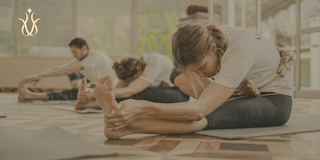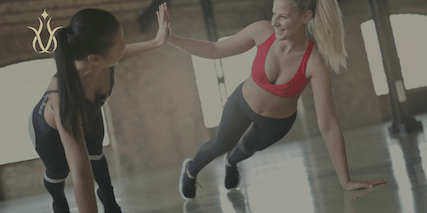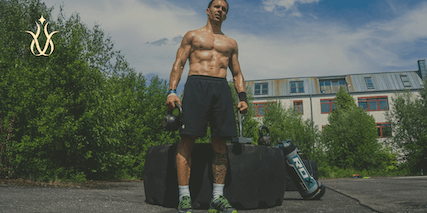Looking to extend your lifespan and improve your health? Our guide on maximizing longevity through exercise is your essential resource. Learn about the top exercises that are key to living longer, including strength training, cardiovascular workouts, flexibility exercises, and balance training. Find out how these activities not only help maintain muscle mass, enhance heart health, and prevent falls, but also improve mental health and cognitive function.
Whether you’re just starting out or adjusting your current fitness plan, our recommendations are designed to fit every fitness level and help you achieve a longer, healthier life.
I. Introduction
When it comes to longevity and healthy aging, few things are as crucial as maintaining a regular fitness routine. Exercise not only improves physical fitness but also contributes to overall well-being and enhances longevity. This article will explore evidence-based fitness strategies that can help you optimize your health and promote longevity.
II. Strength Training for Longevity
A. Benefits of Strength Training
Strength training, also known as resistance training or weightlifting, offers some of the best exercises for longevity. Engaging in regular strength training exercises can lead to significant improvements in muscle mass, bone density, and metabolic health. Studies have shown that strength training can help counteract age-related muscle loss, a common concern in older adults. Strength training plays a vital role in maintaining functional independence and reducing the risk of falls and fractures by preserving and increasing muscle mass.

B. Recommended Strength Training Exercises for Longevity
To maximize the benefits of strength training exercises for longevity, it’s important to incorporate a variety of exercises that target different muscle groups. Compound movements, such as squats, deadlifts, and bench presses, are highly effective in engaging multiple muscle groups simultaneously. These exercises promote overall strength and functional fitness, making everyday tasks easier and reducing the risk of injury.
Focusing on proper form and technique is essential to prevent injuries when performing strength training exercises. Additionally, gradually increasing the intensity and weight over time, a concept known as progressive overload, allows for continuous adaptation and improvement. This approach ensures that your muscles are challenged and stimulated for optimal results.
C. Evidence of Strength Training for Longevity
Numerous studies support the positive effects of strength training on aging and longevity. For example, a study published in the Journal of Aging and Physical Activity found that older adults who engaged in regular strength training had better overall health outcomes and a reduced risk of chronic conditions. In addition, another study published in the Journal of the American Geriatrics Society demonstrated that strength training improved physical function and quality of life in older adults.
III. Cardiovascular Exercise for Longevity
A. Cardiovascular Health Benefits
Cardiovascular exercise, also known as aerobic exercise, is a key component of fitness exercises for longevity. Regular cardiovascular exercise offers a wide range of benefits for heart health, reducing the risk of chronic diseases and promoting overall longevity. Studies have consistently shown that individuals who participate in cardiovascular exercise have a lower risk of cardiovascular disease, including heart attacks, stroke, and hypertension.
Cardiovascular exercise improves heart function by increasing cardiac output, strengthening the heart muscle, and improving blood circulation. It also helps lower blood pressure, reduce LDL (harmful) cholesterol levels, and increase HDL (good) cholesterol levels, contributing to cardiovascular health.
Furthermore, regular cardiovascular exercise has been associated with a decreased risk of chronic conditions such as type 2 diabetes, obesity, and certain types of cancer. These positive effects on disease prevention can significantly contribute to healthy aging and increased longevity.
Research published in the European Heart Journal demonstrated that individuals who engaged in regular cardiovascular exercise had a 46% lower risk of developing heart disease than sedentary individuals. Another study published in JAMA Internal Medicine showed that higher aerobic fitness levels were associated with a mortality reduction from all causes.
B. Types of Cardiovascular Exercises for Longevity
Various types of exercise can be incorporated into your cardiorespiratory fitness routine to promote longevity. An endurance exercise such as running, cycling, swimming, and participating in aerobic classes are excellent choices for cardiovascular workouts. These activities help elevate the heart rate, increase oxygen uptake, and challenge the cardiovascular system.

When engaging in cardiovascular exercise, it’s important to consider the frequency, duration, and intensity of your workouts. As a guide, the American Heart Association recommends at least 150 minutes of moderate-intensity aerobic exercise or 75 minutes of vigorous-intensity aerobic exercise per week. It’s advisable to spread out the exercise sessions throughout the week and aim for moderate and vigorous activities.
To ensure safety and optimize the benefits of a cardiovascular exercise routine, it’s crucial to listen to your body, gradually increase intensity and duration, and consult with a healthcare professional if you have any underlying health conditions.
IV. High-Intensity Interval Training (HIIT) for Longevity
A. Benefits of HIIT
High-Intensity Interval Training (HIIT) has gained popularity recently for its numerous benefits in improving cardiovascular fitness, metabolic health, and overall longevity. HIIT involves alternating short bursts of intense exercise with brief recovery periods. This form of exercise challenges the cardiovascular and muscular systems, significantly improving fitness levels.
HIIT workouts have been shown to increase cardiovascular endurance, improve insulin sensitivity, and enhance metabolic function. For example, research published in the Journal of Applied Physiology demonstrated that HIIT can improve aerobic capacity by up to 25% compared to moderate-intensity continuous exercise.
HIIT also has a positive impact on the aging process. A study published in Cell Metabolism found that HIIT can reverse age-related decline in mitochondrial function, which is essential for cell energy production. Additionally, HIIT has been shown to improve cognitive function and brain health in older adults, contributing to healthy aging.
B. Sample HIIT Exercises for Longevity
Incorporating HIIT workouts into your fitness routine can be an effective way to promote longevity. Here are a few examples of HIIT workouts that can be done at home or in the gym:
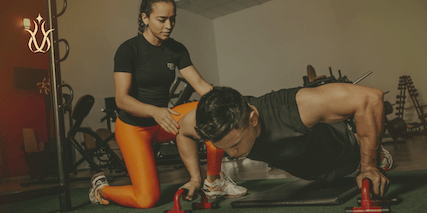
Tabata Training: Perform 20 seconds of high-intensity exercise (e.g., burpees) followed by 10 seconds of rest. Repeat for a total of 8 rounds.
Circuit Training:
- Create a circuit of exercises targeting different muscle groups (e.g., mountain climbers, squats, push-ups, high knees).
- Perform each exercise for 30 seconds with minimal rest between exercises.
- Repeat the circuit 3-4 times.
Interval Sprints: Find an open space or use a treadmill. Sprint at maximum effort for 30 seconds, followed by 60 seconds of light jogging or walking. Repeat for 10-15 minutes.
When engaging in HIIT workouts, it’s important to warm up properly before the intense intervals and cool down afterwards to prevent injury and aid in recovery. Gradually increasing the intensity and duration of your HIIT sessions will allow your body to adapt and improve over time.
Listen to your body and modify the exercises or intensity as needed. It’s advisable to consult with a healthcare professional before starting any new exercise program, especially if you have any underlying health conditions.
V. Flexibility and Mobility Training for Longevity
A. Importance of Flexibility and Mobility
Flexibility and mobility are vital components of a comprehensive fitness routine for promoting longevity and maintaining functional independence. As we age, our muscles and joints lose some elasticity, leading to stiffness and limited range of motion. However, incorporating flexibility and mobility exercises into your fitness routine can help counteract these effects.
Maintaining flexibility and mobility allows for better movement and posture, reducing the risk of falls and injuries. It also improves joint health, preventing conditions such as arthritis and enhancing overall physical performance. For example, research published in the Journal of Aging and Physical Activity has shown that flexibility exercises can improve functional ability and enhance the quality of life in older adults.
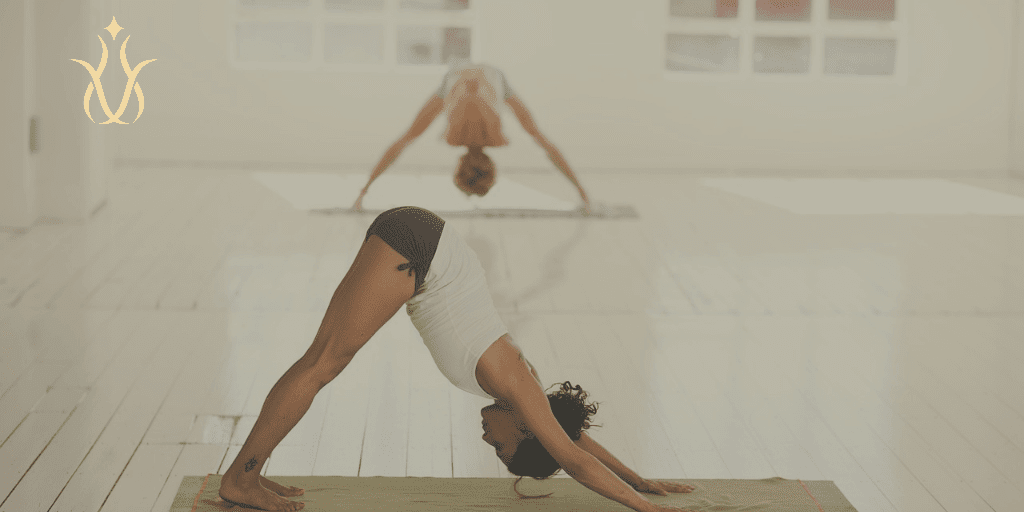
B. Recommended Flexibility and Mobility Exercises for Longevity
Yoga: Yoga combines physical poses, controlled breathing, and meditation to enhance flexibility, strength, and balance. It promotes mobility throughout the body while providing mental relaxation and stress reduction. Regular yoga practice has been linked to improved flexibility, reduced joint pain, and increased overall well-being. It is considered on of the very best exercises for longevity. Consider joining a yoga class or following online tutorials to learn and practice various poses.
Pilates: Pilates focuses on core strength, flexibility, and overall body control. It incorporates exercises that improve flexibility, posture, and body awareness. Pilates exercises target deep muscles and emphasize controlled movements, enhancing mobility and stability. Participating in Pilates classes or using instructional videos can help you learn proper techniques and benefit from this form of exercise.
Dynamic Stretching: Dynamic stretching involves active movements that gently take joints and muscles through their full range of motion. It improves flexibility, warms up the body, and prepares it for physical activity. Incorporate dynamic stretching exercises such as arm circles, leg swings, and walking lunges into your warm-up routine before engaging in other fitness activities.
Remember to start with gentle stretches and gradually increase the intensity and duration as your body becomes more flexible. It’s important to listen to your body and avoid pushing beyond your comfortable range of motion to prevent injury.
VI. Conclusion
In conclusion, a well-rounded fitness routine is crucial for promoting longevity and healthy aging. Incorporating the various types of these exercises for longevity, including strength training, cardiovascular conditioning, high-intensity interval training (HIIT), and flexibility and mobility training, can provide a comprehensive approach to maintaining physical fitness and overall well-being.
Strength training offers numerous benefits, such as improved muscle mass, bone density, and metabolic health. Cardiovascular exercise helps promote heart health, lowers the risk of chronic diseases, and enhances longevity. HIIT workouts provide an efficient way to improve cardiovascular fitness and metabolic health, contributing to healthy aging. Flexibility and mobility training ensure that your body maintains its range of motion, reducing the risk of injuries and enhancing functional independence.
Start with manageable goals and gradually increase the intensity and duration of your workouts as you progress. Stay consistent, listen to your body, and make adjustments as needed to ensure a safe and enjoyable fitness journey.
Remember, it is always important to consult with a healthcare professional or fitness specialist before starting any new exercise regimen, especially if you have underlying health conditions or are new to physical activity. They can provide personalized guidance and activity recommendations based on your individual needs and goals.
VII. Frequently Asked Questions
What are the best exercises for Longevity?
Engaging in regular physical activity is crucial for maintaining good health and promoting longevity. Here are some exercises known to contribute to a longer and healthier life:
- Aerobic Exercises: This includes activities like walking, running, cycling, swimming, and dancing. Aerobic exercises help improve cardiovascular health, boost the immune system, and manage weight.
- Strength Training: Lifting weights or doing bodyweight exercises like push-ups and squats helps maintain muscle mass and strength, which often decline with age. Regular strength training can also help improve bone health and manage chronic conditions like arthritis and diabetes.
- Flexibility Exercises: Activities like yoga, Pilates, or simple stretching routines can help improve flexibility and mobility, reduce the risk of injury, and improve balance and stability, which are particularly important as we age.
- Balance Exercises: Practices such as Tai Chi, or balance-focused movements, help reduce the risk of falls and related injuries, a significant concern in the aging population.
- High-Intensity Interval Training (HIIT): This form of exercise combines short bursts of intense exercise with periods of rest or lower-intensity exercise. HIIT can improve cardiovascular health, increase stamina, and aid in weight management.
- Mind-Body Exercises: Activities like yoga and tai chi not only offer physical benefits but can also help reduce stress, improve mental health, and enhance cognitive function.
What is the medical evidence of exercise for longevity?
The medical literature suggests that a combination of aerobic and resistance training is beneficial for longevity. Regular aerobic activity of moderate intensity for at least 150 minutes per week is associated with most of the longevity benefits, with additional benefits observed with higher duration and intensity.
High maximal oxygen uptake in mid-life is a strong marker of longevity, and muscle mass is a critical prognostic factor in aging and cancer.
Resistance training is recommended to increase muscle strength and mass, which is particularly important in aging and disease.
An individualized multicomponent exercise program that includes aerobic activity, strength exercises, and flexibility is recommended to treat frailty.
Furthermore, moderate physical activity (MPA) and vigorous physical activity (VPA) are associated with reduced cardiovascular and all-cause mortality, with a large meta-analysis showing that strength training is independently associated with lower rates of all-cause mortality and cardiovascular disease.
The optimal cumulative dose of strength training for best outcomes is about 60 minutes per week.
What are the specific exercises recommended for different age groups to promote longevity?
Incorporating both aerobic and resistance training is recommended to promote longevity across different age groups. For older adults, the International Conference on Frailty and Sarcopenia Research (ICFSR) suggests aerobic exercises such as walking with changes in pace and direction, treadmill walking, step-ups, stair climbing, stationary cycling, dancing, or aquatic exercise. The endurance exercises may start with a duration of 5–10 minutes, progressing to 15–30 minutes with frequencies from 3 to 7 days per week.
The American Heart Association (AHA) recommends resistance training programs that include a single set of 8 to 10 different exercises, such as chest press, shoulder press, triceps extension, biceps curl, pull-down, lower back extension, abdominal crunch/curl-up, quadriceps extension or leg press, and leg curls/calf raise, performed 2 to 3 days per week. For healthy participants under 50 to 60 years of age, 8 to 12 repetitions at 60%–80% of 1-repetition maximum (1-RM) are recommended, and for older participants, 10 to 15 repetitions at 40%–60% of 1-RM.
The American College of Sports Medicine (ACSM) also supports resistance training for older adults, emphasizing the importance of intensity and volume to meet basic requirements for muscle strength and hypertrophy.
How often should I perform exercises for longevity?
For optimal longevity benefits, aim for a combination of aerobic exercise, strength training, and flexibility exercises at least three to five days per week. The American Heart Association recommends at least 150 minutes of moderate-intensity aerobic activity or 75 minutes of vigorous-intensity aerobic activity per week, along with two or more days of strength training targeting all major muscle groups.
Can I still benefit from fitness routines if I am older or have physical limitations?
Absolutely! Fitness routines can be tailored to individual needs and abilities. Working with a healthcare professional or qualified fitness specialist who can guide safe and appropriate exercises for your specific circumstances is essential. They can help modify exercises to accommodate physical limitations and ensure that you engage in activities promoting your overall well-being.
Can I achieve longevity benefits by doing only one type of exercise?
While any form of physical activity is beneficial, a well-rounded fitness routine that includes a combination of aerobic exercise, strength training, flexibility, and mobility exercises is generally recommended for maximizing longevity benefits. Each type of exercise offers unique advantages and contributes to overall fitness and well-being.
Remember, consistency is key. Find activities that you enjoy and can sustain over the long term. Gradually progress and challenge yourself as you become more comfortable and proficient. With dedication and perseverance, you can reap the rewards of a fitness routine that promotes longevity and a healthier, happier life.
What are the best exercise apps and online resources for longevity?
There are several excellent exercise apps and online resources available that can help you maintain a fitness routine for longevity. Here are some of the best options:
Nike Training Club: Nike Training Club offers a wide range of workout programs designed to improve strength, endurance, and overall fitness. The app provides guided workouts, video demonstrations, and different fitness levels and goals options.
MyFitnessPal: MyFitnessPal is a popular fitness app that tracks your nutrition and calorie intake and offers various workout routines and exercise-tracking features. It has an extensive library of exercises and customizable workout plans suitable for different fitness levels.
Fitbod: Fitbod is an app that creates personalized workout plans based on your goals, fitness level, and available equipment. It uses artificial intelligence to generate workouts that challenge and progress as you improve.
Beachbody On Demand: Beachbody On Demand is a comprehensive platform that provides access to a vast library of workout programs, including strength training, cardio, yoga, and more. The app offers various fitness options suitable for all fitness levels.
Yoga with Adriene: Yoga with Adriene is a popular YouTube channel offering free yoga classes suitable for all levels, including specific routines for flexibility, strength, and relaxation. Adriene’s approachable teaching style and variety of classes make it a great resource for longevity-focused workouts.
Fitness Blender: Fitness Blender is a website and YouTube channel offering a wide range of workout videos for strength, cardio, and flexibility training. They provide detailed instructions and modifications, making their workouts accessible to all fitness levels.
Aaptiv: Aaptiv is an audio-based fitness app that provides guided workouts across various categories, including running, strength training, yoga, and more. The app offers expert-led workout classes with motivating music and audio instructions.
Remember, choosing exercise apps and resources that align with your fitness goals, preferences, and any specific needs or limitations is important. Consult with a healthcare professional or fitness specialist to ensure that the exercises and programs you choose suit your circumstances.
Resources:
Pedersen BK.
Current Opinion in Clinical Nutrition and Metabolic Care. 2019;22(2):167-173.
.
O’Keefe JH, O’Keefe EL, Eckert R, Lavie CJ.
Missouri Medicine. 2023 Mar-Apr;120(2):155-162.
Izquierdo M, Merchant RA, Morley JE, et al.
The Journal of Nutrition, Health & Aging. 2021;25(7):824-853.
Medicine and Science in Sports and Exercise. 2009;41(3):687-708.
Gremeaux V et al (2012). Exercise and longevity. Available from: https://pubmed.ncbi.nlm.nih.gov/23063021/
O’Keefe EL at al (2020). Training for Longevity: The Reverse J-Curve for Exercise. Available from: https://pubmed.ncbi.nlm.nih.gov/32848273/ https://www.sciencedirect.com/science/article/pii/S0033062023000129?via%3Dihub
Brown RP, Gerbarg PL (2009). Yoga breathing, meditation, and longevity. Available from: https://pubmed.ncbi.nlm.nih.gov/19735239/
D’Onofrio G et al (2023). Musculoskeletal exercise: Its role in promoting health and longevity. Available from:
Mayo Clinic. (2021). Aerobic exercise: Top 10 reasons to get physical. Available from: https://www.mayoclinic.org/healthy-lifestyle/fitness/in-depth/aerobic-exercise/art-20045541
Harvard Health Publishing. (2020). The 4 most important types of exercise. Available from: https://www.health.harvard.edu/exercise-and-fitness/the-4-most-important-types-of-exercise
National Institute on Aging. (2018). Exercise and Physical Activity. Available from: https://www.nia.nih.gov/health/exercise-and-physical-activity
American Heart Association. (2020). Recommendations for Physical Activity in Adults and Kids. Available from: https://www.heart.org/en/healthy-living/fitness/fitness-basics/aha-recs-for-physical-activity-in-adults
Disclaimer: This article is for informational purposes only and should not replace professional medical advice. If you have specific concerns or medical conditions, it is recommended to consult with a healthcare professional for personalised guidance and support.
Related Topics:
Pilates vs Yoga: Which Is Right for You?
The Benefits of Tai Chi: A Comprehensive Guide
The Best Wellness Retreats for Effective Weight Loss
The Ultimate Guide to Yoga for Beginners: Your Questions Answered
